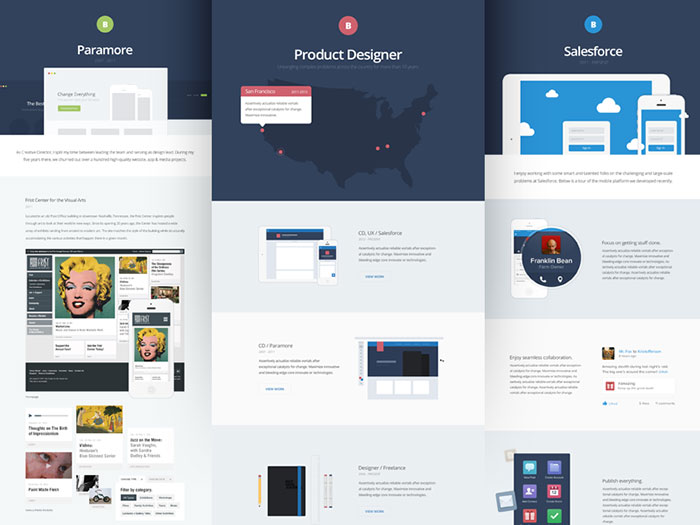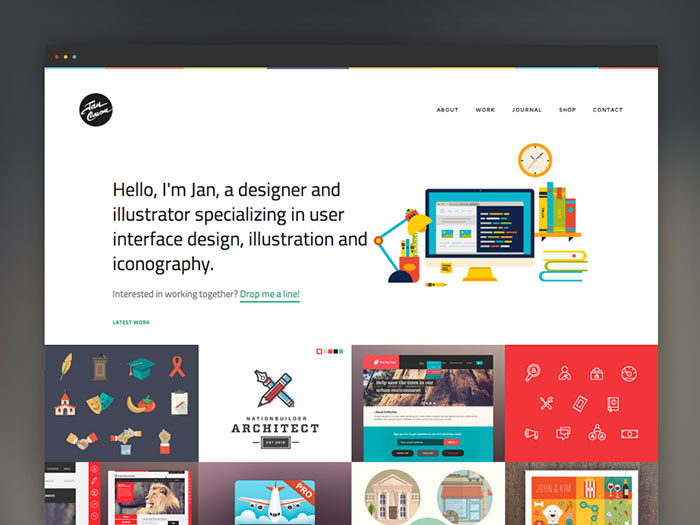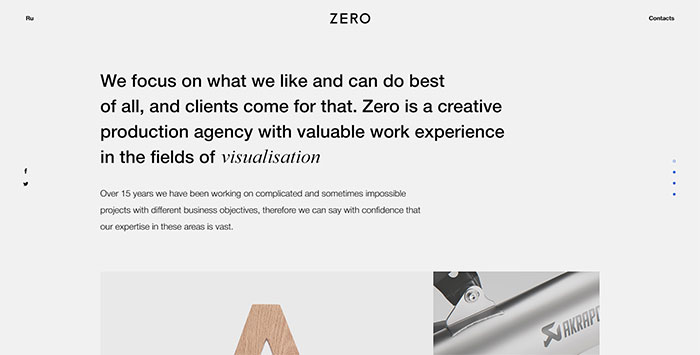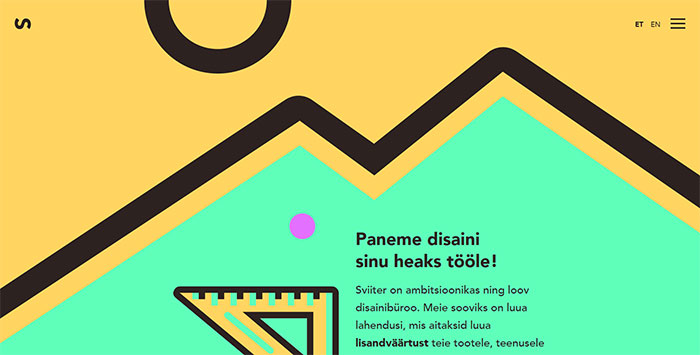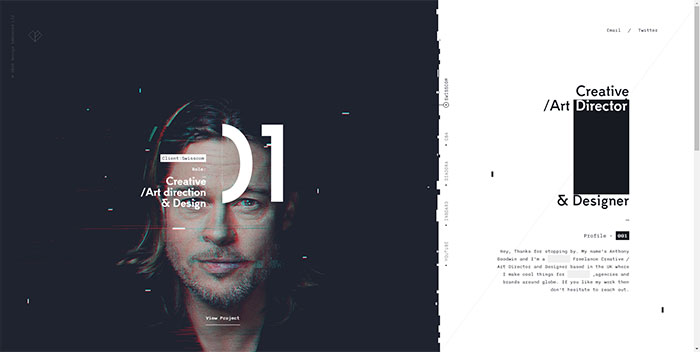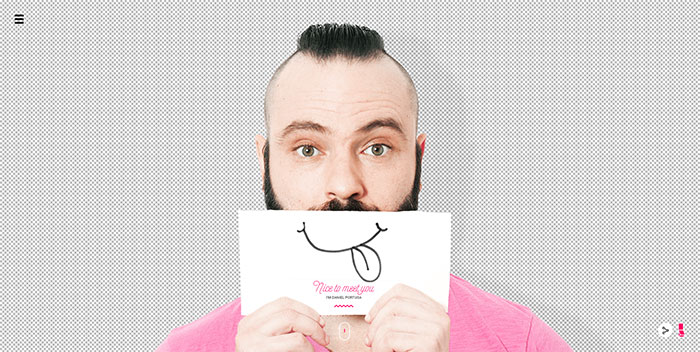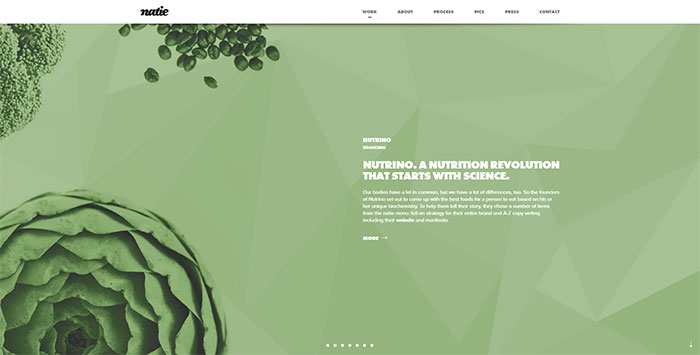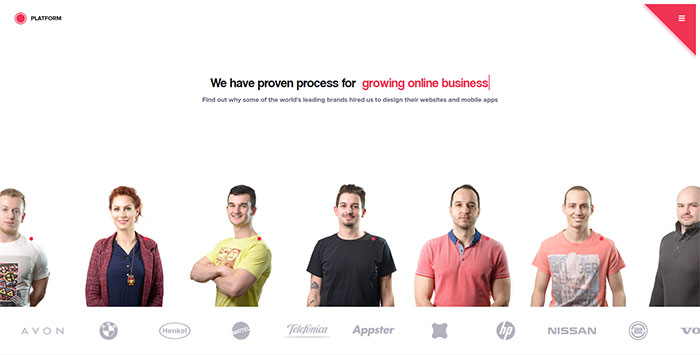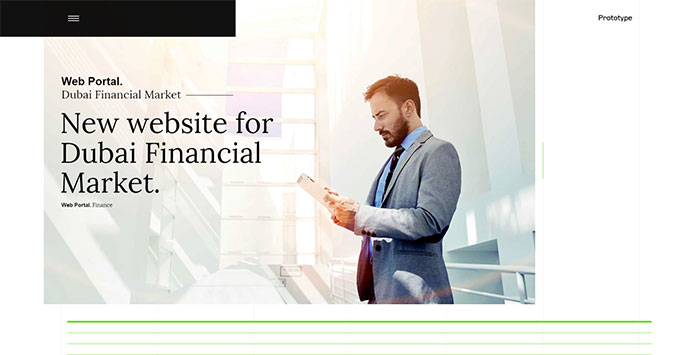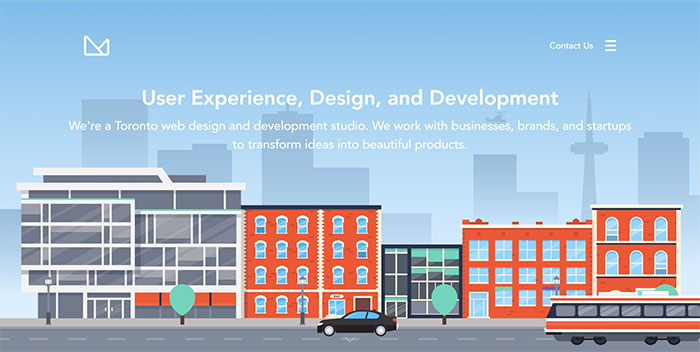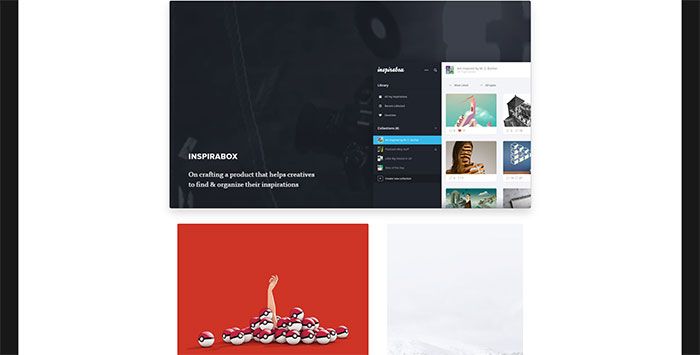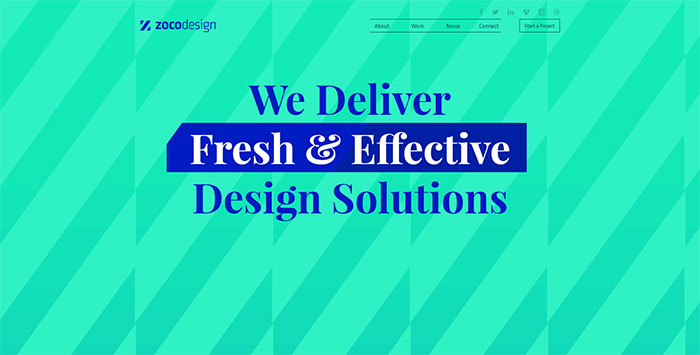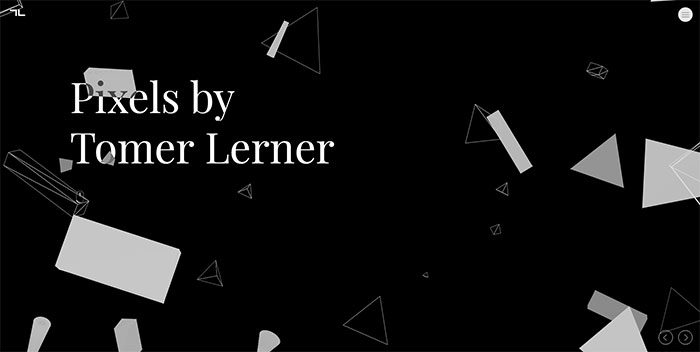Advertisement
Designing a great portfolio, whether it is a web design portfolio or a graphic design portfolio, is a challenging task for every designer.
Designing a project for ourselves, such that could meet our highest requirements, can be tough. Still, it doesn’t mean that we cannot create an online portfolio which is entertaining, accurate, and focuses on our strongest design qualities.
Long before Internet arrived on the scene, designers used to ‘pack’ their work in paper portfolios and to deliver printed copies to employers. Nowadays, they create advanced online portfolios which are accessible to everyone who has access to the internet.
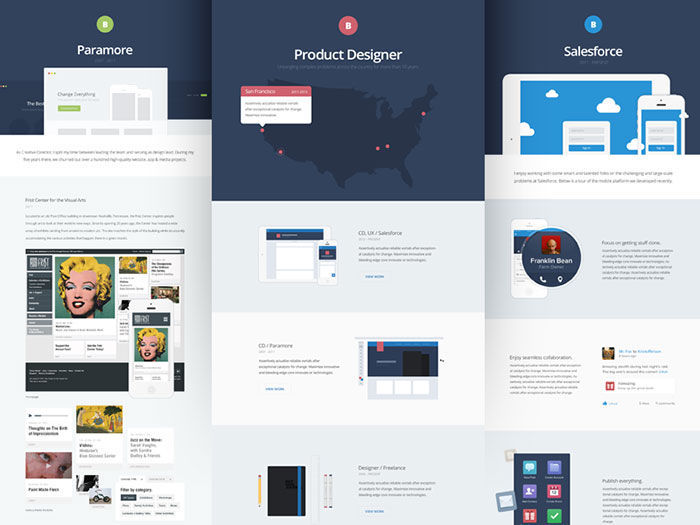
Image source: Brad Haynes[1]
Still, designers should be aware that sharing portfolios on social platforms is not going to be enough. They need to push their way to the front lines and to stand out of the crowd.
How to make a good portfolio website
Sometimes, a breathtaking portfolio design is the biggest challenge of a designer. It is the visual story of his personality, the definition of his work passion, and a showcase of his masterpieces. It is very likely that someone will neglect the importance of the portfolio and would say that interested parties will take no more than a glance at it.
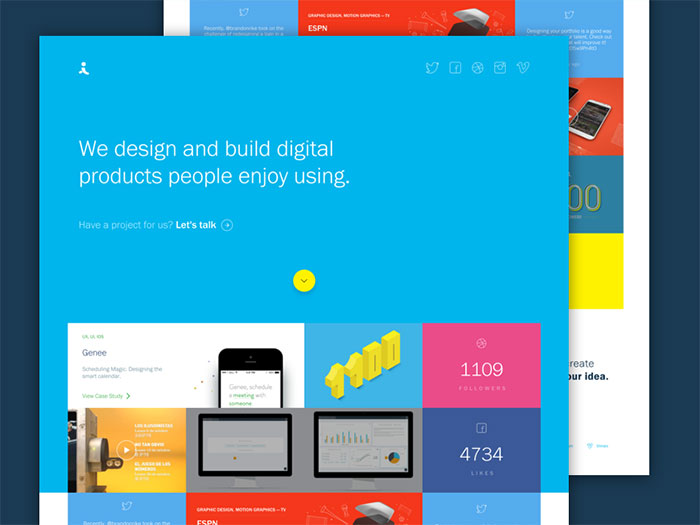
Image source: indicius.com[2]
That’s exactly why its quality is so important. The first expression must be stunning and mark each following interaction with that designer.
The competition is huge. And designers need to ensure they have a well-made portfolio, capable of attracting attention and delight.
A great portfolio is a must for active and creative freelancers. Rather than a set which can showcase successful project and expertise to prospective employers, a good portfolio is a designer’s best option for building a recognizable name in the web world.
The fact that portfolios need to be digitalized and available is very helpful. Internet opens an entire new horizon where designers can target audiences and expand their professional circles.
Let us share few great portfolio design tips:
Think what you want to share
Before you’re able to summarize the projects you want to display, you need to be aware of users’ expectations about your work.
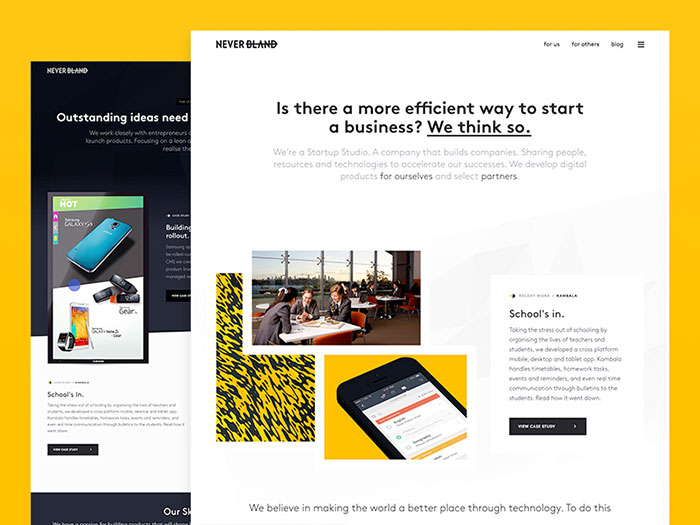
Image source: neverbland.com[4]
Even if online portfolios offer more space to share work than a resume does, careful selection is not a choice. Remember that people have limited time. They wouldn’t waste it on samples that don’t really prove creativity and expertise.
The truth is, the success of your job application depends entirely on the quality of your portfolio.
Select nothing but the ‘killing’ pieces
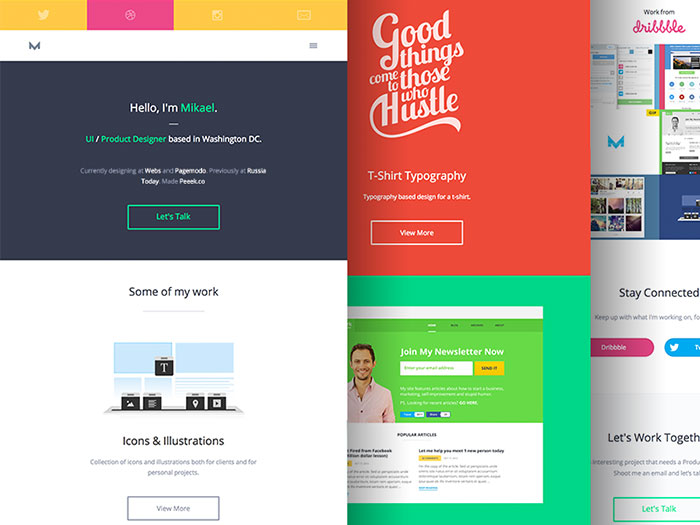
Image source: Mikael Edwards[5]
By killing pieces, we mean best possible examples of your work. They prove your talent and that you’ve been successful and well-rated.
This is the essential information you should include about every project:
- Short description
- Constraints and risks
- Timeline
- Business objectives
- Things you would change from current perspective
- Tracked success metrics
- Your team (if you have one)
Adjust your portfolio to the situation
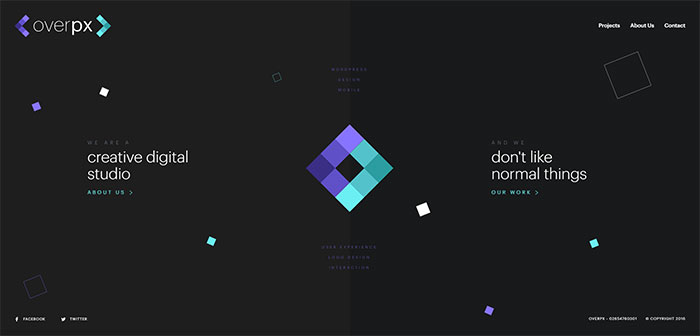
Image source: overpx.com[6]
You could use a little research on optimal presentation methods. For instance, if you’re a user interaction designer, you have to present a digital platform and to disperse it on the web.
On the other hand, if you’re a print designer who delivers the portfolio in person, you are supposed to bring a paper-based version to non-tech clients.
In both of the cases, you should think about the audience that is going to see it. And you should tailor the content according to their specific requirements.
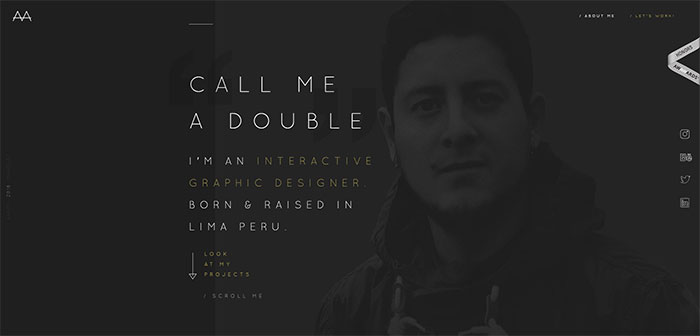
Image source: Aaron Márquez[7]
Applying the ‘less is more’ rule could motivate a user to click the thumbnail and to look for more details.
Thus, choose a sudden crop to focus on the strongest, most attractive parts of your project.
Patterns and larger – scale branding can enjoy this method. Also, you could introduce interesting and informative photographs, or creative logos displayed on a filled background.
Facilitating navigation
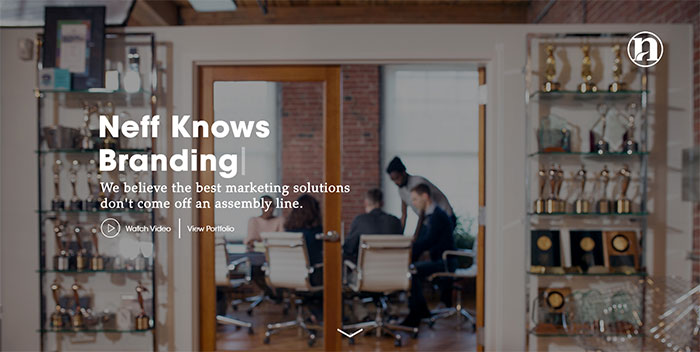
Image source: neffassociates.com[8]
The ultimate target is to create a portfolio, where viewers will have no navigation troubles, so whatever.
Don’t place all the information on one page because you could mislead your users and you could cause some of your best pieces to be overlooked. Besides, it is human nature to underestimate the skills of a person who offered one rich page, instead of several more modest ones.
Variety is fun
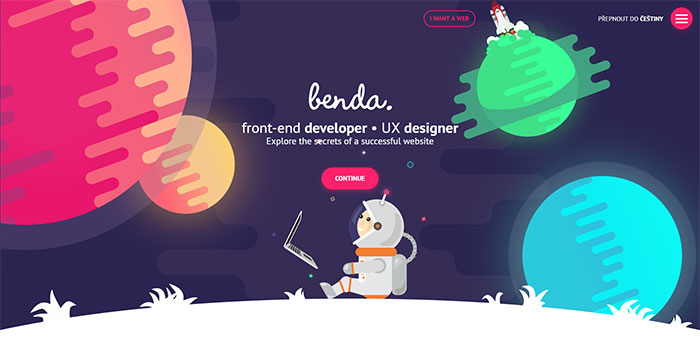
Image source: filipbenda.com[9]
A single illustration or a design form will appear boring. Still, if brave enough to incorporate more of them, make sure you combine them in a way that looks nice and functions perfectly. Your portfolio should look like a compact package made by a single person.
Portfolios tell a long story
![]()
Image source: pixelkings.com[10]
It’s true – the essential parts of your portfolio are your outstanding project. But you should not underestimate the interest employers have in you as a person.
Great portfolios should also include well-made personal websites. A portfolio where an employer could read something more about you, your background, likes and dislikes or preferred coworkers.
Explain your case studies
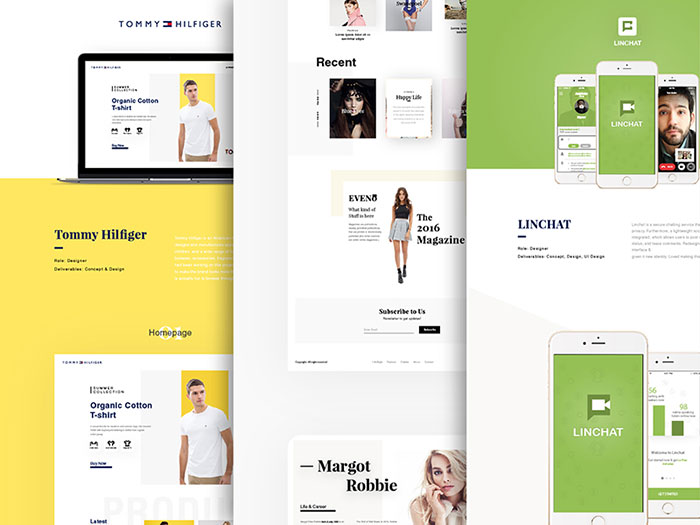
Image source: Kultar Singh[11]
You’re a designer and your design capacity is the first thing you need to show to your employers. Yet, spicing a bit with business skills can not harm the result.
In fact, employers enjoy reading about case studies. They estimate your career-building opportunities in their company.
Messy problems — and how applicants work through them — can show a great deal more in a portfolio than one finished, airtight solution. It’s then the applicant’s job to curate those into an experience for the portfolio viewer.
Quote source: Liz Danzico[12]
Making case studies or possessing business skills in general is important for a designer to explain the purpose of his project. A business case shows that the designer is able to calculate and prove the cost/value of his project.
Case studies should contain the following elements:
- descriptive background
- aims and goals
- innovative strategy
- success metrics
- results
- positive testimonials
Nothing but high resolution
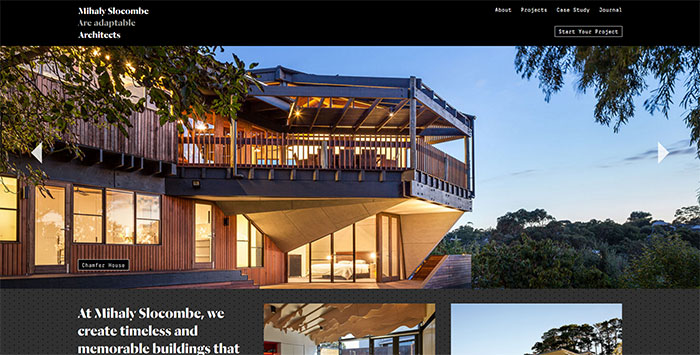
Image source: Mihaly Slocombe[13]
Even if you think you’re never going to deliver a paper-based portfolio. Make sure it will preserve its quality when you print it. Don’t take chances-make a folder and save high resolution images of each page.
Put contact information is a strategic place
It’s not exaggerated to say that in a portfolio, contact information is equally important as your projects.
Employers could use little detail on who you are, what you’ve done, and of course, your credentials.
But, be careful with the amount of information you are including. At the end of the day, your work will be more decisive than your words.
The process should be simple. Once employers are captivated by the quality of your work, they scroll down and get straight to your contact information. You could include basic information on every page, or create a separate one for the purpose.
Don’t lose focus
Unless it is an extraordinary achievement, exclude everything older than three years. As you know, technology improves first, and you don’t want to work to look outdated.
Cohesion matters
An online crafting show application, requiring decisive images, could benefit from the appropriately chosen pictures.
Conclusion
A designer’s portfolio is a public display of his personality, skills, style, taste, and opinions.
Obviously, creating a great portfolio puts designers under a lot of pressure, especially those looking for a new job.
A portfolio is not something you create in a moment. You need to make a plan and a strategy and to outline things you want to include before you’ve started. The plan needs to be good enough to attract manager’s attention even before they open the work section.
All risks aside, a well-created portfolio is a designer’s key to success and you need to try making one of the best portfolio websites.
Portfolios showcase
Sviiter is an ambitious and creative design agency. Their passion is to create solutions which could give that extra value to your product, service or to your business in general.
Their main focus is branding and what comes with it, but mainly they offer full service where you can find also print, package, web and even e-books.
Natie is a branding agency.
Whether it’s branded writing and graphic design, strategy work, copywriting and storytelling, developing visual identities and logos, creating and developing websites, animations, brochures, social media or conferences – if it involves how a company presents itself to the world, they do it with sophistication, smarts and a smile.
Their multi-talented international team has been telling brand stories in every medium for years. They work together virtually because they all share the same values, the same aesthetic and marketing sensibilities and most important, the same commitment to making great work for their clients. Just about the only thing they don’t share is physical proximity.
A Growth-Oriented Design Agency helping startups and well-run businesses increase sales, leads or profits through a data-driven design.
Prototype is a full service interactive agency helping brands to design and develop online marketing strategies, web experiences and mobile solutions.
Prototype is creating bespoke digital solutions by detecting, mentoring and supporting exceptional young minds.
It’s about fresh thinking, big ideas and experiences that stick to tackle your brand’s specific challenges in a growing digital world.
They are a team that develops websites, web applications, and social networks. They design for both the web and mobile devices, taking you from the first stages of planning, design, and development all the way through a successful launch.
Since 2001, 3magine has been creating experiences that define brands, build businesses and make the Internet a better, more usable place.
3magine is led by Evan Cancelliere, Karl Schellenberg, and Krystian Frencel. With over 30 years of combined experience, 3magine can be a key and critical partner for your design and development projects.
Kai is currently working as the Design Lead at JTL-Software where we build tools that enable people to start their own retail business.
What sets them apart is their ability to get to know their clients while taking the time to understand all of their business challenges and opportunities. They work with brands that seek change, and we are passionate about creating innovative design solutions to actualize these objectives. Their team is small and close knit to foster long term relationships with the people we work with, who are always at the heart of each design solution and the ideas they manifest.
ZoCo brings a strong and versatile design experience to the table, working with industry leaders and local entrepreneurs alike, including Royal Bank of Scotland, Cardinal Health and EY as well as numerous local clients like Nexosis and Footclicks. They apply their craft to branding, print, web, digital prototypes, innovation strategy, video production, environments, signage and experiences.
Tomer Lerner is an award winning designer, front-end developer and animator.
Former head of UX at Wikiwand and Webydo, co-founder of Zest.is and currently leading the product at Wisdo. Apparently, he has a mysterious tendency to work with companies that start with W.
